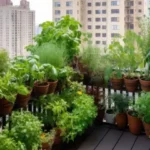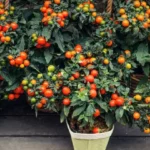The critical factor to consider when growing tomatoes in containers is the depth requirement. You might wonder, how deep do containers need to be for tomatoes to promote healthy growth? The answer lies in understanding the specific needs of tomato roots and how container depth plays a vital role in their growth and development.
Although some varieties of tomatoes can grow in containers 12 inches deep, most need a pot at least 18 inches (45 cm) deep. However, larger varieties may require even deeper containers, ideally around 24 inches (60 cm) deep, for proper root development. Sufficient depth in the container helps prevent the roots from becoming root-bound and promotes healthier, more productive plants.
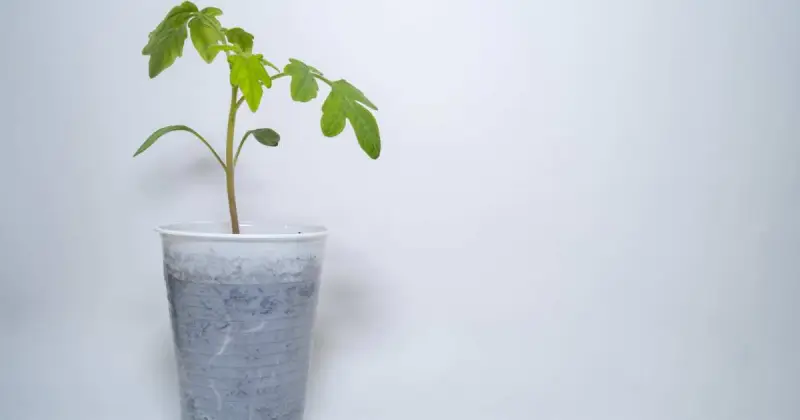
In this article, you’ll discover how to keep your tomato plants happy with the right size container, its importance in the plant’s lifecycle, and additional benefits that support more abundant yields, especially for indeterminate varieties. Stay tuned to discover the ideal container depths that can significantly impact your tomato cultivation journey.
Humble Highlights
- Uncover the best container size and depth for your backyard gems PLUS when to use deeper pots for particular tomato varieties so you can increase your chances for your plants to reach their full growth potential, leading to larger and more abundant harvests.
- Save time by cultivating your tomatoes in fabric pots so you can allow your budding crop an even distribution of water and nutrients throughout the soil AND discover what hidden benefit your plants receive from developing in these unique containers.
- Discover these 5 mind-blowing benefits of container size and its impact on your tomato plants so you can prevent root binding, where the roots grow in a circular pattern and become tangled, and lessen the chances of severe diseases like root rot and other soil-borne challenges.
Optimal Container Depth For Tomatoes
When growing tomatoes in containers, it’s vital to ensure that the container depth is sufficient to support the plants’ root systems. Tomatoes have varying root depths, so the depth of the container becomes essential for their growth. A container depth of 12 to 18 inches is recommended for most tomato varieties. However, for indeterminate tomato varieties that tend to grow taller and have extensive root systems, opting for a deeper container of around 24 inches is more suitable.
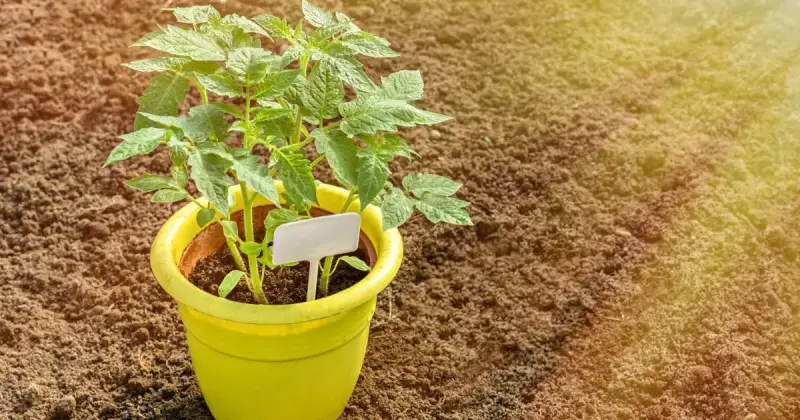
Choosing the ideal container depth is vital for your tomato plants’ overall health and productivity. Deeper containers provide more space for the roots to spread out and grow with free access to nutrients, oxygen, and water within the soil. 1
All of this extra soil volume also aids in moisture retention, crucial for the tomatoes’ development. Additionally, deeper containers offer better plant stability, especially during periods of strong winds, erratic weather conditions, or heavy fruit production.
Interestingly, the shape of the container can also affect plant health and productivity. Tall, narrow containers can sometimes restrict root growth and lead to issues such as root binding, where the roots become tangled and unable to access nutrients effectively.
Choosing a container with a broader base and sufficient depth allows the roots to spread freely, promoting healthier root development and overall plant growth.
Importance Of Container Depth For Tomatoes
Proper container depth is essential for cultivating tomatoes, ensuring ideal root development and overall plant vigor. When considering the container depth for growing tomatoes, it’s necessary to understand its significance in promoting healthy root systems.
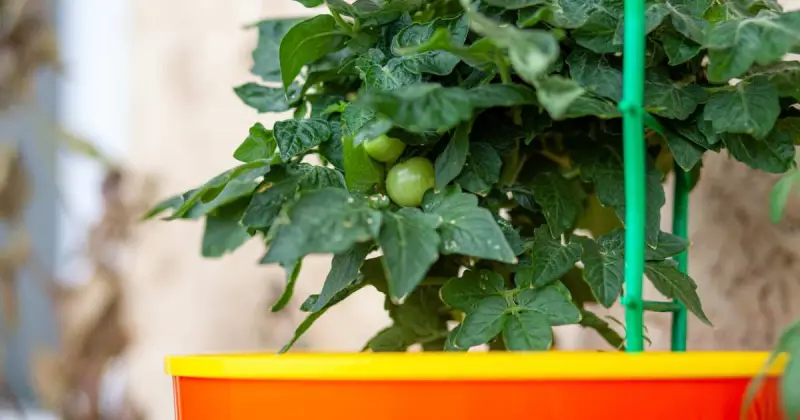
Inadequate container depth can result in restricted root growth, leading to stunted plants and diminished fruit production. Deeper containers, ranging from 18 inches or more, facilitate better water retention and nutrient uptake by the tomato plants, contributing to improved plant health and potentially fuller harvests.
For larger tomato varieties, such as beefsteak or heirloom types, containers with depths of 24 inches or more are recommended to adequately accommodate their extensive root systems. Proper container depth supports excellent growth and fruit production and plays an essential role in overall plant health. 2
Remember, selecting the appropriate container size with sufficient depth is fundamental for ensuring the successful cultivation of tomatoes in containers. Be sure to check out the informative video below that discusses 5 insider secrets backyard growers can uncover to cultivate juicier tomatoes no matter your experience.
Root System Depth For Tomato Growth
It is good practice to provide containers with sufficient depth to facilitate excellent root growth for tomato plants. Ideally, this depth should be between 12 and 18 inches for most varieties and 24 inches or more for indeterminate types. Deeper containers support the development of extensive root systems, which are essential for nutrient absorption and overall plant health.
Adequate root depth allows for efficient water uptake and nutrient utilization, which in turn leads to vigorous growth and abundant fruit production in tomato plants.
Ideal Root Depth
For the best growth of tomato plants, ensure containers are at least 12-18 inches deep to support their root systems effectively.
Indeterminate varieties benefit from deeper containers, ideally around 24 inches, to accommodate their extensive root growth.
The root depth of tomatoes typically ranges from 12-18 inches, which is essential for nutrient uptake, water absorption, and overall healthy development. However, inadequate container depth can hinder tomato plants’ productivity, limiting their ability to access essential nutrients and water. 3
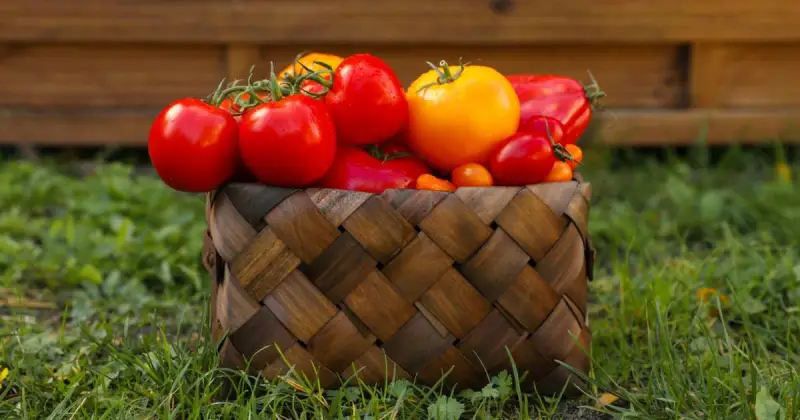
Nutrient Absorption Requirements
Enhancing nutrient absorption in tomato plants requires adequate depth for their root systems to extend and access essential resources effectively. Aim for a container depth of at least 12-18 inches to support healthy tomato root development, allowing roots to reach adequate depths in search of nutrients and water.
Deeper containers promote stronger roots, aiding in ideal nutrient absorption. More container depth is also needed to avoid root crowding, which impedes overall plant growth. Consider fabric pots or grow bags to facilitate deeper root penetration and enhance nutrient uptake.
Fabric pots can help improve root health through a process known as air pruning. These unique containers allow air to penetrate all sides, stimulating the roots to grow towards the edges. When the roots reach the fabric, they are exposed to air, which causes the tips of the roots to dry out and die off. This pruning process encourages the roots to branch out and create a more extensive root system.
Air pruning has several benefits for tomato plants. It prevents the roots from becoming root-bound, where they grow in a circular pattern around the container, which can restrict growth and nutrient uptake. Instead, air-pruned roots are more fibrous and better able to absorb water and nutrients from the soil.
Additionally, a more extensive root system can help anchor the plant more securely and support healthier growth and higher yields.
Ensuring Sufficient Depth For Tomatoes
To ensure tomato plants flourish, select containers with sufficient depth to support their root systems effectively. A container depth of 12-18 inches is generally recommended for standard tomato varieties and 24 inches for indeterminate varieties.
Adequate depth plays a significant role in promoting robust tomato growth by offering ample soil volume, moisture retention, and nutrient uptake capabilities. 4
| Aspects | Importance |
|---|---|
| Root System | Adequate space for growth |
| Overall Health | Impacts plant vitality |
| Productivity | Enhanced by deep containers |
| Stability | Support for tall plants |
| Nutrient Uptake | Essential for plant growth |
Impact Of Container Depth On Tomatoes
The depth of the container can have a significant impact on tomato plants’ growth and overall health. Here are some key impacts:
- Root Development: A deeper container allows for more extensive root development. Tomatoes have a deep root system, and a deeper container provides ample space for the roots to grow downward, resulting in a stronger, more stable plant.
- Moisture Retention: Deeper containers can hold more soil, which means they can retain moisture better, especially during hot weather. This can help prevent the soil from drying out too quickly and reduce the frequency of watering,
- Nutrient Uptake: A deeper container can accommodate a larger soil volume, providing more plant nutrients and higher yields.
- Stability: Tall tomato plants, especially indeterminate varieties, can become top-heavy as they grow and produce fruit. A deeper container provides better stability, reducing the risk of the plant tipping over.
- Temperature Regulation: Deeper containers can help regulate soil temperature more effectively, which is vital for tomato plants’ growth. Consistent soil temperature can promote healthy root development and overall plant growth. 5
Selecting a container depth that matches the specific tomato variety is essential to prevent stunted plants and reduced fruit production. Shallow containers can restrict root growth, leading to overall plant stress and diminished yields. Remember, the level of your tomato productivity starts with the ideal container – something many gardeners overlook. Check out the video below that expertly details several tips on how to cultivate tomatoes in containers.
Deep Containers For Healthy Tomato Plants
Deep containers are best for tomato plants to ensure their roots have ample space to grow and support the plant’s overall health. Deeper containers encourage strong root development, enabling better water and nutrient absorption and leading to healthier and more productive tomato plants.
Soil Depth Importance
A key insight into the impact of container depth on tomato plants is the potential for nutrient stratification. In deeper containers, nutrients can settle unevenly, with higher concentrations near the top of the soil and lower concentrations at the bottom. This can ultimately lead to uneven nutrient uptake by the plant roots, affecting growth and fruit development.
To mitigate this issue, it’s crucial to regularly mix or aerate the soil in deep containers to ensure that nutrients are evenly distributed. This can be done by gently turning the soil with a hand trowel or fork, careful not to disturb the roots. 6
Additionally, using a balanced fertilizer and following a regular fertilization schedule can help ensure that the plants receive a consistent supply of nutrients throughout the growing season.
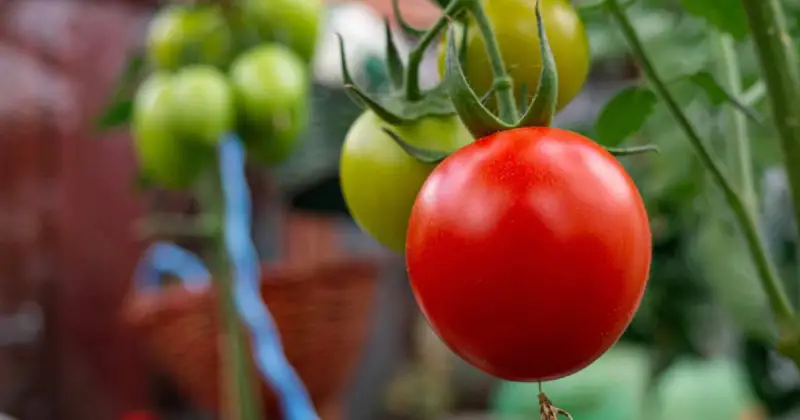
| Soil Depth (inches) | Key Factors | Implications |
|---|---|---|
| 18 | Healthy root development | Improved nutrient uptake, robust plant growth |
| 24+ | Support for larger tomato varieties | Enhanced growth, increased fruit production |
| Varying | Insufficient depth | Stunted plants, reduced yield |
Root System Support
In shallow containers, tomato roots can become root-bound, growing in a circular pattern and unnecessarily tangled. This restricts the plant’s ability to absorb water and nutrients, leading to stunted growth and reduced yield. Deeper containers help prevent root binding, allowing roots to grow freely and develop properly.
Inadequate container depth can result in root constriction, leading to stunted plant growth. Choosing containers with ample depth is critical for ensuring the health and productivity of your tomato plants. Remember that a flourishing root system is the foundation for flourishing tomatoes with bountiful yields.
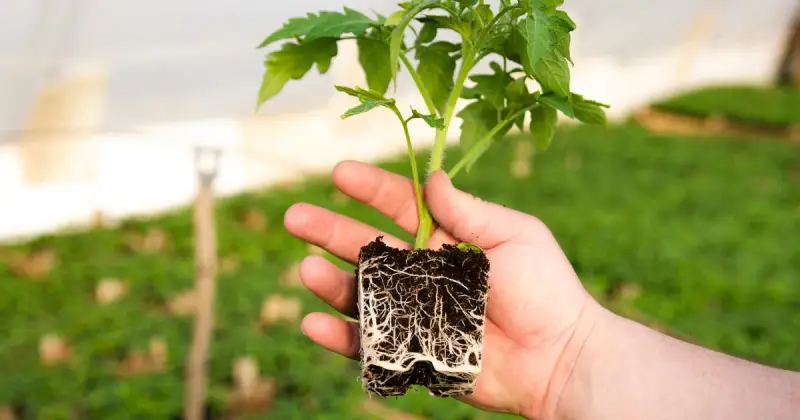
Container Depth For Tomato Root Development
A minimum container depth of 12-18 inches is essential for ideal tomato root development. Deeper containers allow tomato roots to grow vertically, accessing critical nutrients and moisture. Inadequate depth can result in restricted root growth, leading to stunted growth, disease, and disappointing production.
| Aspect | Importance |
|---|---|
| Vertical Growth | Deep containers support vertical root expansion for better nutrient uptake |
| Nutrient Access | Sufficient depth enables roots to access essential nutrients for growth 7 |
| Moisture Retention | Deeper containers retain moisture better, aiding in consistent hydration |
| Root System Health | Adequate depth promotes robust root systems, crucial for plant vitality |
Conclusion
Ensuring the appropriate container depth for growing tomatoes is crucial for promoting healthy root development, efficient nutrient absorption, and overall plant productivity. Gardeners can support robust growth and bountiful fruit production by providing adequate depth, ranging from 12 to 24 inches, depending on the tomato variety; however, deeper is always better.
Insufficient soil depth can restrict root growth, resulting in stunted plants with reduced fruit production. Adequate soil depth in containers ensures that tomato plants have ample space for anchorage and stability as they mature. They are critical in facilitating ideal conditions for them to thrive and reach their full potential.
What size containers work best for the tomatoes you sow? Drop us a line in the comment section below and let us know along with your favorite tomato variety!
SOURCES
- ResearchGate – Effect Of Container Size On The Growth And Development Of Tomato Seedlings
- The National Gardening Association – Container Size For Tomato Plants
- Royal Horticultural Society – Plant A Container: Tomatoes
- Michigan State University, Extension – Successful Tomatoes Planted In Pots Require the Right Container
- The National Gardening Association – Appreciate Advice For Growing Tomatoes In Planters NE Zone 7b
- University Of Arizona, Cooperative Extension – Tomato – Planting/Growing/Harvesting
- Iowa State University, Extension And Outreach – Growing Tomatoes In A Container

